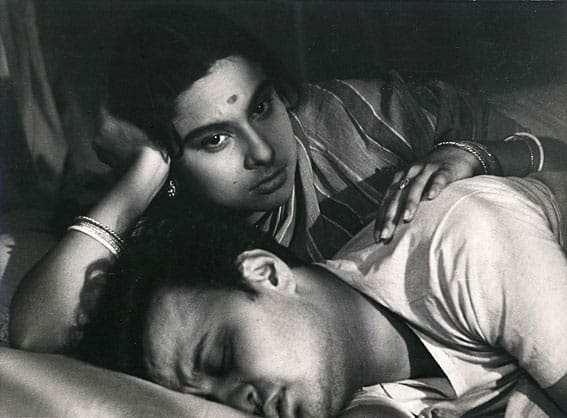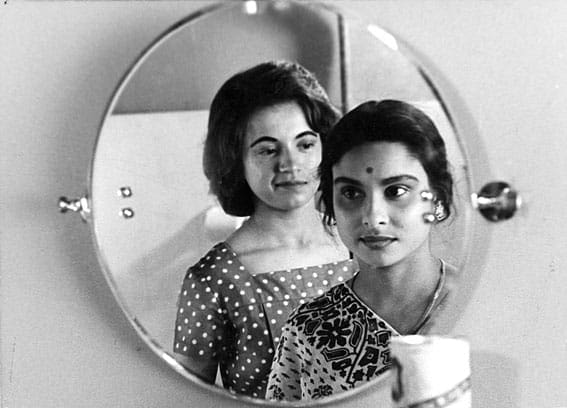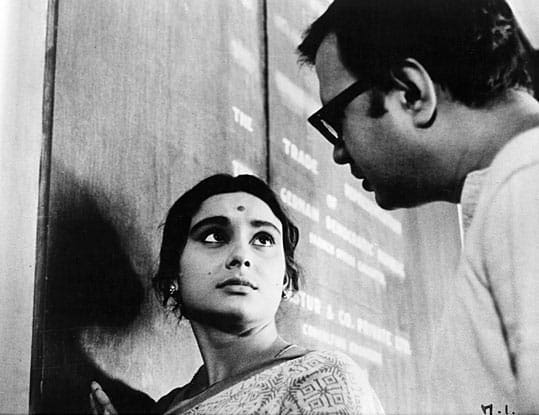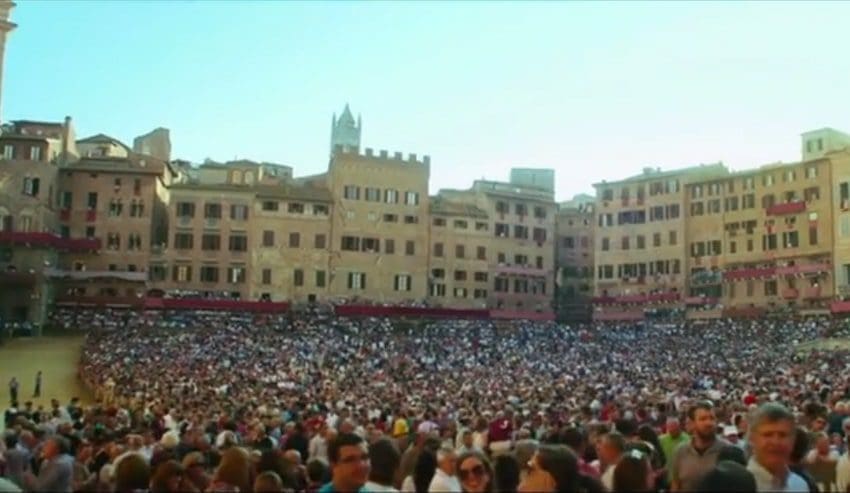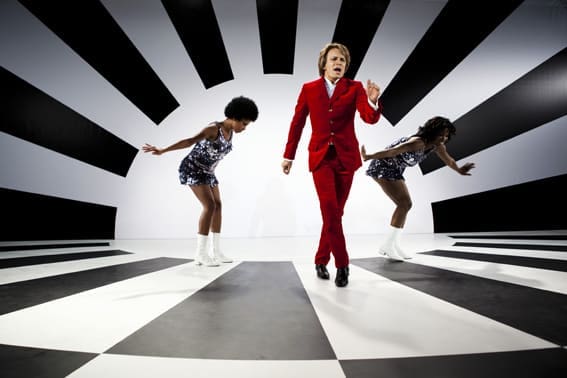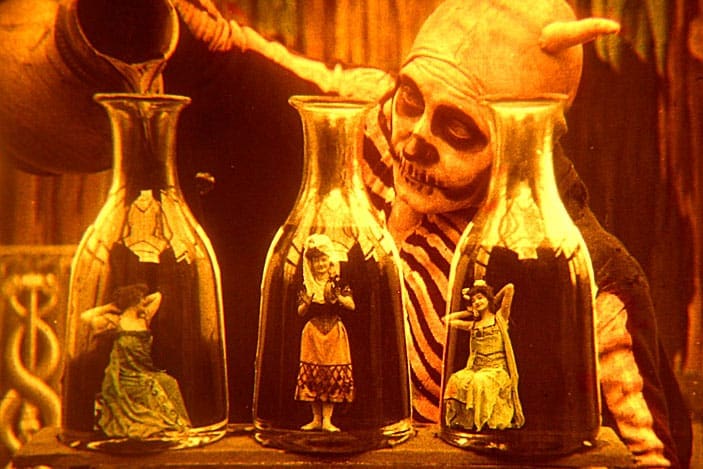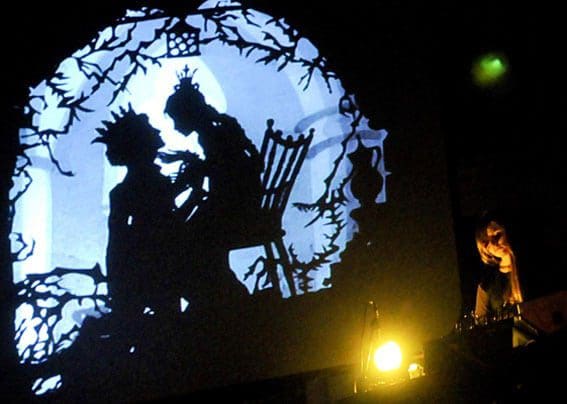The Big City, a film set in mid-1950 India, is set for re-release as part of a retrospective of director Satyajit Ray’s work during August and September 2013 – possibly 3 or 4 years too late.
Why, especially considering that the movies main theme, “women in the workplace”, has evolved a great deal in the last 50 or so years?
Subrata Muzumder, a clerk at a newly established bank, is struggling to make ends meet so he accepts that his wife, Arati, take on a job despite the resentment that this might cause in his parents, who live with them. They also have two children, a girl and a younger boy in the same house.
Madhabi Mukherjee plays Arati, exquisitely. Her screen presence and depiction of a housewife’s foray into working life in post-colonial Calcutta is absorbing. She traverses the point at which Bengali society touches Commonwealth institutions and culture. The most intimate of these contacts is her relationship with Anglo-Indian co-worker Edith, a friendship which brings a gift central to the plot movie – lipstick.
The intrigue inspired by the movie is found in this contact, in the resentment by the parents who represent conservative elements of Bengali society, and also the constant switching of scene from the families small home to the office and bourgeois houses of Arati’s customers.
Simple, sometimes melodramatic, emotions bring to highlight the stark contrasts between the two worlds. This starkness however is constantly thwarted by husband Subrata’s ironic distance in the movie. It is through Subrata that the voice of the director, Ray, is strongest and most ambiguous. Raising the question as to whether The Big City is just a celebration of a women’s extended role in the family.
In one of the more tense moments of the movie, Subrata’s bank runs out of capital causing a bank run. He’s beaten as he approaches the closed bank and manages to call Arati at the nick of time, moments before she hands in her resignation letter, written and signed on his request. Subrata’s misfortunes presents an opportunity for Arati to continue to assert her freedom in her new role.
1950s Calcutta is the curious fragmenting tableau Ray uses to critique and engage, somewhat prophetically, with globalising tendencies. He paints a humorously complex picture of the contradictions of modern society. The potential for enjoyment impacts on previous bonds and ties, in which opportunities increase and devotion is under threat.
words Ramis Cizer


